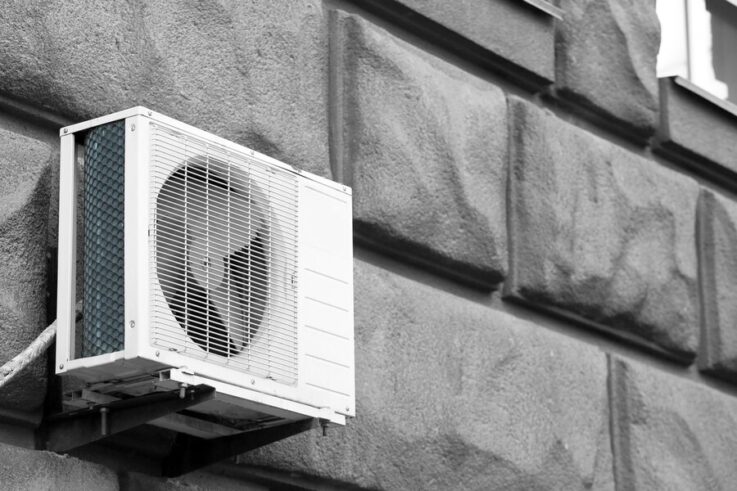
Understanding SEER Ratings for AC Units
Understanding SEER Ratings for AC Units
SEER ratings, or Seasonal Energy Efficiency Ratio, are crucial metrics when it comes to selecting an air conditioning unit for your home or business. Understanding SEER ratings is pivotal in making informed decisions about energy consumption, cost-effectiveness, and environmental impact. Essentially, SEER ratings indicate how efficiently an AC unit operates over a typical cooling season. In this blog post, we’ll delve into the intricacies of SEER ratings, demystifying their significance and empowering you to make the best choice for your cooling needs.
What are SEER ratings?
SEER ratings, or Seasonal Energy Efficiency Ratio, are industry-standard metrics used to gauge the energy efficiency of air conditioning units. They assess how efficiently an AC system converts electricity into cooling output during a typical cooling season. A higher SEER rating denotes superior efficiency, indicating that the unit requires less energy to produce the same cooling effect.
This knowledge empowers consumers to make informed choices, comparing various models to select the most energy-efficient option suitable for their requirements. Ultimately, prioritizing SEER ratings leads to cost savings on utility bills and contributes to environmental sustainability by reducing energy consumption and carbon emissions.
Importance of SEER ratings in AC units
SEER ratings play a pivotal role in determining the performance and cost-effectiveness of air conditioning units. By evaluating SEER ratings, consumers can gauge the long-term operational efficiency of an AC system and make informed purchasing decisions. Opting for a higher SEER-rated unit typically translates to lower energy consumption and reduced electricity bills over time.
Moreover, choosing an energy-efficient AC unit contributes to environmental conservation by minimizing greenhouse gas emissions associated with electricity generation. Thus, understanding and prioritizing SEER ratings empower consumers to invest wisely in cooling solutions that not only save money but also promote sustainability.
Making informed choices with SEER ratings
Navigating the array of air conditioning options can be daunting, but understanding SEER ratings is key to making informed decisions. SEER, or Seasonal Energy Efficiency Ratio, serves as a reliable indicator of an AC unit’s energy efficiency. By comparing SEER ratings among different models, consumers can assess which units offer the best balance between performance and energy consumption.
Investing in a higher SEER-rated unit may involve a higher upfront cost, but it often pays off through lower utility bills over time. Ultimately, being aware of SEER ratings empowers consumers to select cooling solutions that align with their budget, environmental values, and long-term energy savings goals.
Defining Seasonal Energy Efficiency Ratio
Seasonal Energy Efficiency Ratio, or SEER, is a standardized measure used to evaluate the energy efficiency of air conditioning systems. It represents the ratio of cooling output (measured in British thermal units or BTUs) to electrical energy input (measured in watt-hours) over the course of a typical cooling season. A higher SEER rating indicates greater energy efficiency, meaning the unit can deliver more cooling output per unit of electricity consumed.
SEER ratings provide consumers with valuable information to compare the efficiency of different AC units and make informed purchasing decisions. Understanding SEER helps consumers prioritize energy savings, reduce utility costs, and minimize environmental impact.
How SEER ratings impact energy consumption
SEER ratings play a pivotal role in shaping the energy consumption of air conditioning units. With higher SEER ratings indicating superior energy efficiency, these ratings directly correlate with reduced electricity usage while maintaining optimal cooling levels. By opting for AC units with higher SEER ratings, consumers can effectively lower their energy bills and alleviate pressure on the electrical grid, contributing to a more sustainable energy landscape.
This informed decision-making empowers individuals and businesses to prioritize environmental consciousness while reaping long-term financial benefits. Understanding the impact of SEER ratings on energy consumption enables consumers to make proactive choices that align with both their budgetary constraints and environmental goals.
Cost-effectiveness and SEER ratings correlation
The correlation between cost-effectiveness and SEER ratings is clear: higher SEER-rated air conditioning units generally offer greater long-term savings despite potentially higher upfront costs. While units with higher SEER ratings may have a higher initial purchase price, their improved energy efficiency leads to lower monthly utility bills over time.
This means that despite the initial investment, consumers can recoup their costs through reduced energy expenses throughout the lifespan of the unit. Thus, considering the correlation between cost-effectiveness and SEER ratings is crucial when selecting an air conditioning system, as it allows consumers to make financially prudent decisions that align with their budget and sustainability goals.
Environmental considerations of SEER ratings
SEER ratings are not only about energy efficiency and cost savings but also have significant environmental implications. Higher SEER-rated air conditioning units consume less electricity, resulting in reduced demand for energy generation. This, in turn, leads to lower emissions of greenhouse gases and other pollutants associated with electricity production.
By choosing air conditioning units with higher SEER ratings, consumers can actively contribute to environmental conservation efforts and help mitigate climate change. Understanding the environmental considerations of SEER ratings empowers individuals and businesses to make choices that align with sustainability goals and promote a healthier planet for future generations.
Operational efficiency explained
Operational efficiency refers to how effectively a system or equipment performs its intended function while minimizing resource consumption and waste. In the context of air conditioning units, operational efficiency encompasses factors such as energy consumption, cooling capacity, and environmental impact. SEER ratings play a crucial role in assessing the operational efficiency of AC units by quantifying their energy efficiency over a typical cooling season.
A higher SEER rating indicates better operational efficiency, meaning the unit can provide the desired cooling output using less electricity. Understanding operational efficiency helps consumers make informed decisions when selecting air conditioning systems, ensuring optimal performance while minimizing resource use and environmental impact.
Typical cooling season and SEER ratings
The term “cooling season” refers to the period of the year when air conditioning systems are most commonly used to maintain indoor comfort levels. This period typically spans the warmer months, varying in duration depending on geographical location and climate. SEER ratings, or Seasonal Energy Efficiency Ratio, are based on the performance of air conditioning units over this typical cooling season.
By evaluating a unit’s efficiency across various temperature conditions and usage patterns, SEER ratings provide consumers with a standardized measure of its energy efficiency. Understanding the relationship between the typical cooling season and SEER ratings enables consumers to make informed decisions about selecting the most suitable air conditioning system for their specific climate and usage needs.
Demystifying the significance of SEER ratings
SEER ratings are often considered a mystifying aspect of air conditioning systems, but their significance is relatively straightforward once understood. Essentially, SEER ratings indicate how efficiently an air conditioning unit converts electricity into cooling output over a typical cooling season. A higher SEER rating signifies greater energy efficiency, meaning the unit consumes less electricity to provide the same level of cooling.
This translates to lower energy bills for consumers and reduced environmental impact. Demystifying the significance of SEER ratings involves understanding their role in evaluating energy efficiency, cost-effectiveness, and environmental sustainability when selecting an air conditioning system. By prioritizing SEER ratings, consumers can make informed choices that optimize performance, save money, and promote eco-friendly practices.
Empowering consumers through SEER knowledge
SEER knowledge empowers consumers to make informed decisions when it comes to selecting air conditioning systems. Understanding SEER ratings allows consumers to compare the energy efficiency of different units and choose the one that best suits their needs. Armed with this knowledge, consumers can prioritize energy savings, reduce utility costs, and minimize environmental impact.
By embracing SEER knowledge, consumers take control of their cooling solutions, making choices that align with their budgetary and sustainability goals while enjoying enhanced comfort and efficiency in their living or working spaces.
SEER ratings: Key to optimal cooling solutions
SEER ratings serve as the cornerstone of optimal cooling solutions. As the industry standard for measuring air conditioning efficiency, SEER ratings provide invaluable insights into a unit’s energy performance over time. By considering SEER ratings, consumers can identify the most efficient cooling solutions that balance performance, energy savings, and environmental impact.
Higher SEER ratings typically indicate superior efficiency, translating to lower energy bills and reduced carbon footprint. Embracing SEER ratings as the key to optimal cooling solutions empowers consumers to make smart, sustainable choices that enhance comfort, save money, and promote environmental stewardship.
Navigating AC unit selection with SEER awareness
Navigating the vast array of air conditioning options becomes more manageable with SEER awareness. SEER ratings offer a standardized metric for evaluating the energy efficiency of AC units, aiding consumers in comparing different models and selecting the most suitable one for their needs.
With SEER awareness, consumers can prioritize energy savings, anticipate long-term costs, and make environmentally responsible choices. By understanding the implications of SEER ratings, consumers navigate AC unit selection with confidence, ensuring they invest in systems that deliver optimal performance, efficiency, and comfort while minimizing their environmental footprint and operating costs.
Grasping the significance of SEER ratings is paramount when it comes to selecting the most efficient air conditioning unit for your home or business. At Cool Factory, Inc, we understand the importance of informed decision-making in achieving optimal comfort and sustainability. Our team is dedicated to providing expert guidance and top-quality AC solutions tailored to your specific needs.
Whether you’re in Sterling, VA, or the surrounding areas, we’re here to help you navigate the world of SEER ratings and find the perfect cooling solution for your space. Contact us today at (703) 713-5113 to speak with one of our knowledgeable experts and take the first step towards a more energy-efficient and comfortable environment.






